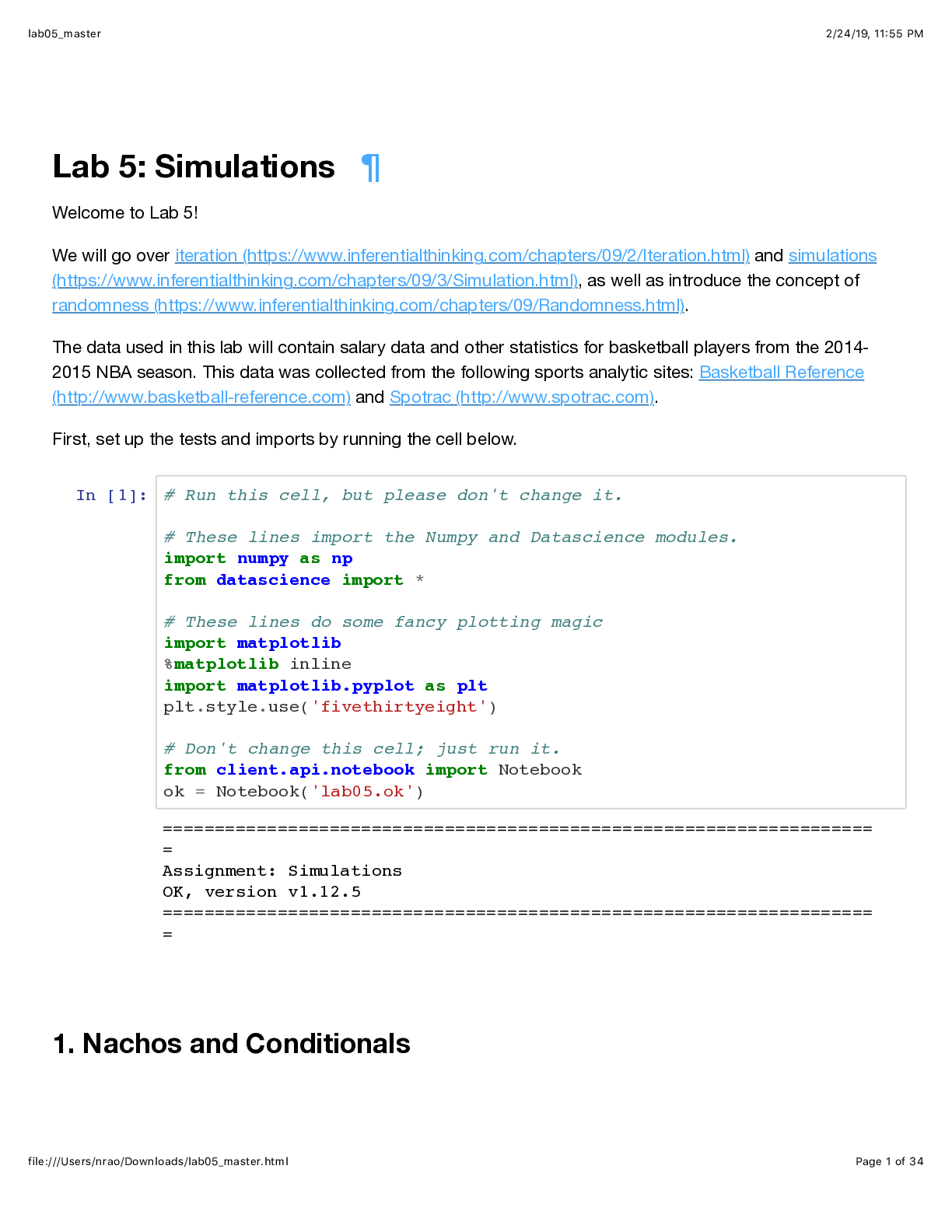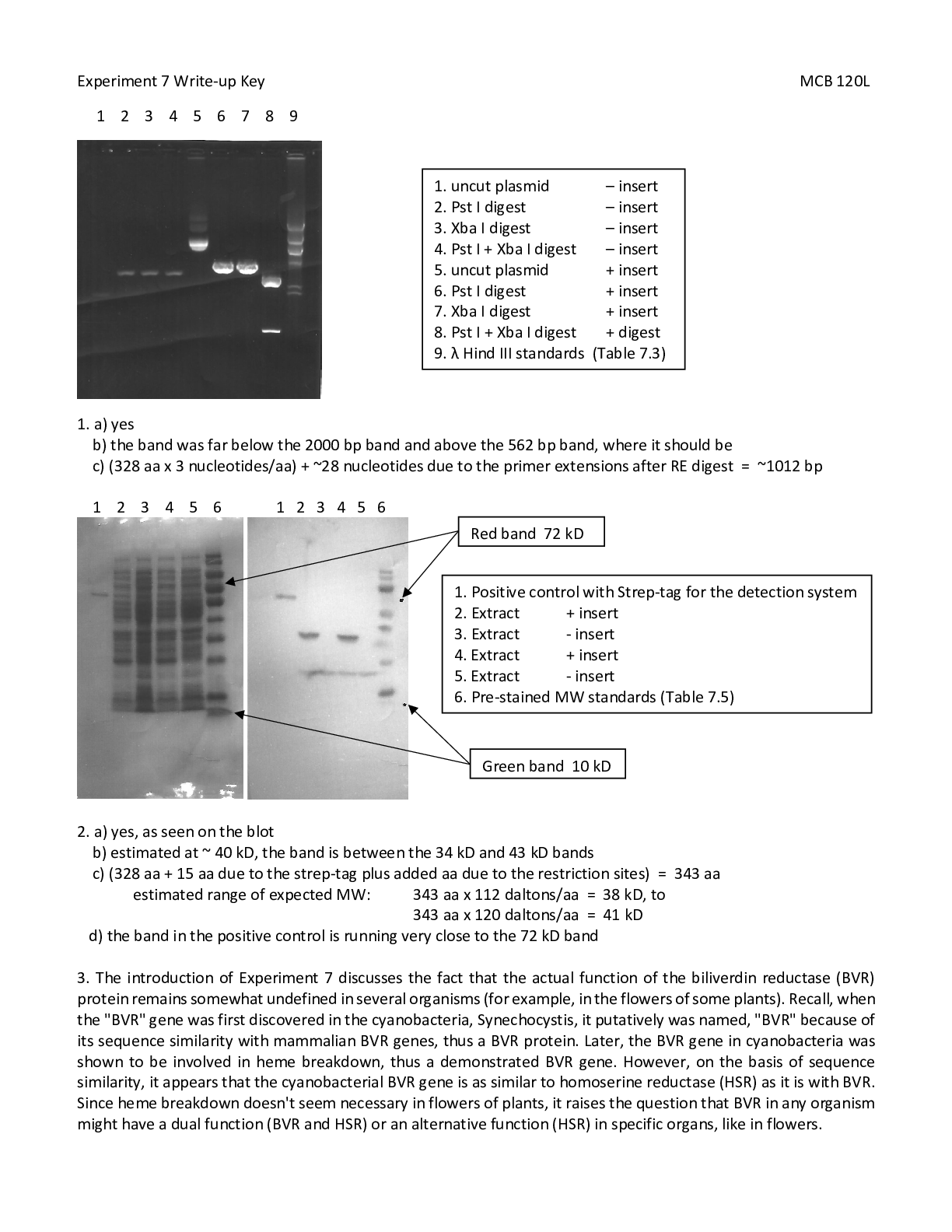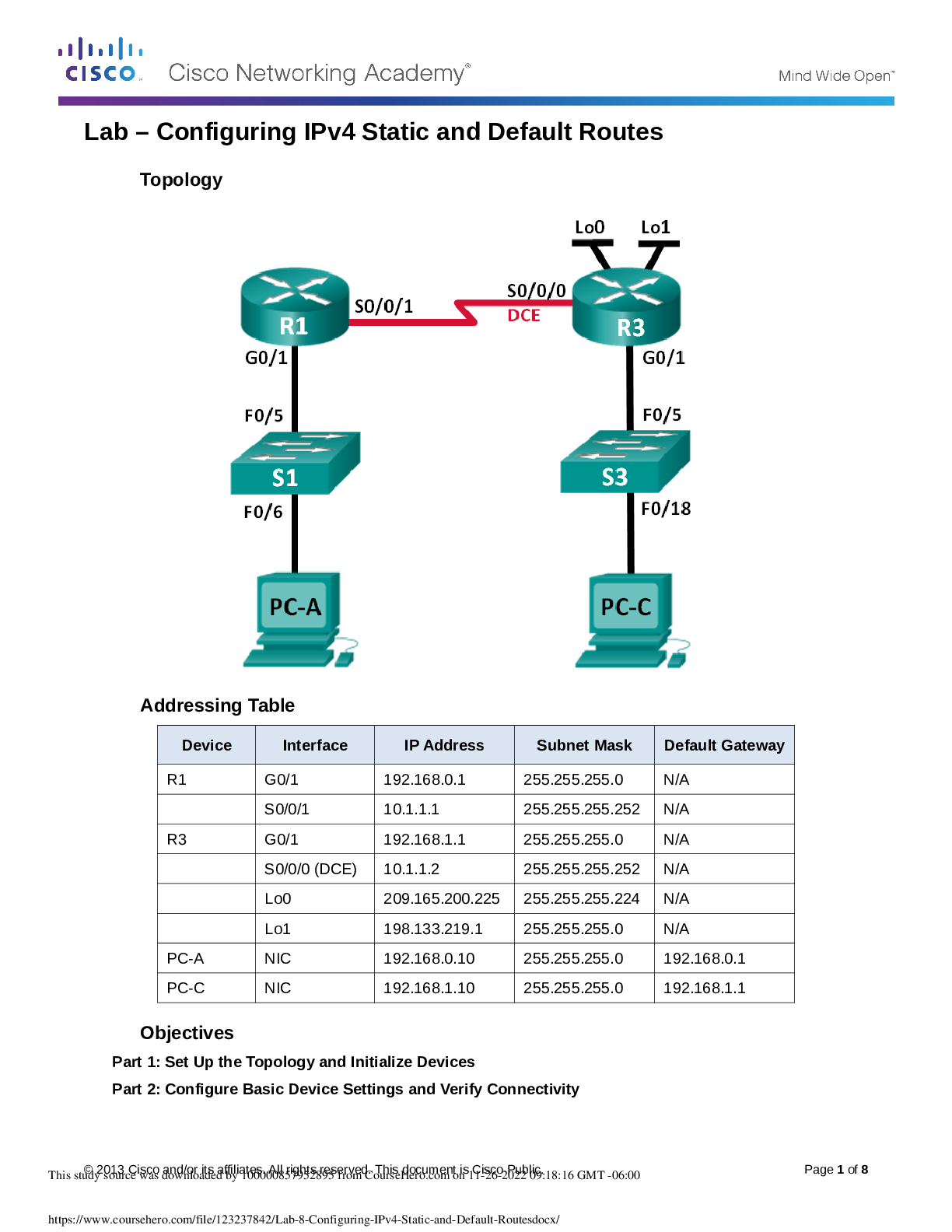Geology > Lab Experiment > ESII_LAB_2_Earthquake_and_Tsunami_Hazards Tarrant County College, Fort Worth GEOL 1402 (All)
ESII_LAB_2_Earthquake_and_Tsunami_Hazards Tarrant County College, Fort Worth GEOL 1402
Document Content and Description Below
Earthquake and Tsunami Hazards – written by Stacey Bilich Name:____________________________________ Date:________________________ Section:_____________________ Introduction Earth is an unstable, ... dynamic, ever-changing system. Most changes within the Earth system are relatively small or happen so gradually that they go unnoticed in our daily lives. But when these changes are powerful and sudden, extraordinary and dangerous events (like those represented in Figure 1) occur. The phenomena represented in the above figure are natural hazards – natural events which, due to their location, severity, and/or frequency, bring about destruction and death. In the exercises that follow, we will examine the hazards presented by two geophysical phenomena: earthquakes and tsunamis. PART 1: Earthquakes There is a 100% chance that an earthquake will happen today. In fact, several hundred earthquakes will occur today. The United State Geological Survey (USGS) estimates that several million earthquakes occur annually worldwide; however, the vast majority of these events go unnoticed due to their small magnitudes. Though any fault in the Earth’s crust holds the potential for producing seismic activity, the vast majority of earthquakes are generated by activity along the major tectonic plate boundaries. Recall from your previous class that the tectonic plates which comprise the lithosphere shift around atop the semi-solid asthenosphere, continually interacting with each other along their edges in zones called plate boundaries. In the following section we will explore the relationship between the types of interactions at plate boundaries and the characteristics of the earthquakes they produce. Figure 1 1.1 Earthquake Occurrence For questions 1-4, use the following animation from Carleton College (accessible under “Other Materials” near the bottom of the page). Specific video times [min:sec] are given to guide you. (Note: There is no sound with the animation.) Feel free to pause or review as needed. After discussing observations with your group, answer each question. http://serc.carleton.edu/nagtworkshops/visualization/examples/57570.html Where Do Earthquakes Occur? [0:00] Observe this representation of Earth. Notice the topography of the continents and the bathymetry of the oceans. [0:28 to 1:40] Each of the approximately 70,000 points in this data set represents the focus of an earthquake which occurred after 1900. The color of the dot indicates relative magnitude: green = small; blue = medium; red = large. 1. Compare the global quantities of small, medium, and large magnitude earthquakes: 2. How would you describe the global distribution of earthquakes? (Be specific about trends or patterns – Where do earthquakes tend to occur? Are small/medium/large magnitude quakes found in the same locations? etc.) 3. [1:40] What do the white lines represent? 4. [2:15] Describe the relationship between the white lines and the global occurrence (magnitudes, quantities, distribution) of earthquakes: 1.2 Earthquake Characteristics As illustrated in the Where Do Earthquakes Occur? visualization, the occurrence of earthquakes is closely linked to tectonic activity at plate boundaries. In this section we will examine the relationship between different types of tectonic interactions and the characteristics of the earthquakes they produce. Convergent Boundaries: Most powerful earthquakes are generated at convergent boundaries. In subduction zones, a tremendous amount of friction is generated as the denser plate is subducted, dragging against the overlying plate, causing both plates to fracture and deform. This results in numerous earthquakes of shallow focus. As the subducted plate descends further, the lithosphere remains cold and can fracture. These fractures generate earthquakes at increasing focal depth (at ~450-700 km) under the overriding plate (Figure 2a). In continental collision areas, both plates are too light for subduction to occur. Broad zones of powerful, very shallow earthquakes (less than 200 km deep) are common in these regions (Figure 2b). Divergent Boundaries Earthquakes at divergent boundaries are frequent, of shallow focus (within 30 km of the surface), and have low magnitudes. They form along the faults comprising the sides and floor of the rift, aligning strictly along the axis of spreading (Figure 2c). Transform Boundaries Earthquakes along transform boundaries occur in linear patterns across a wide fault zone and tend to be of shallow focus (usually less than ~100 km depth) because neither plate is experiencing subduction (Figure 2d). Small magnitude earthquakes are numerous; infrequent la [Show More]
Last updated: 2 years ago
Preview 1 out of 18 pages

Buy this document to get the full access instantly
Instant Download Access after purchase
Buy NowInstant download
We Accept:

Reviews( 0 )
$11.00
Can't find what you want? Try our AI powered Search
Document information
Connected school, study & course
About the document
Uploaded On
Nov 08, 2022
Number of pages
18
Written in
Additional information
This document has been written for:
Uploaded
Nov 08, 2022
Downloads
0
Views
202









